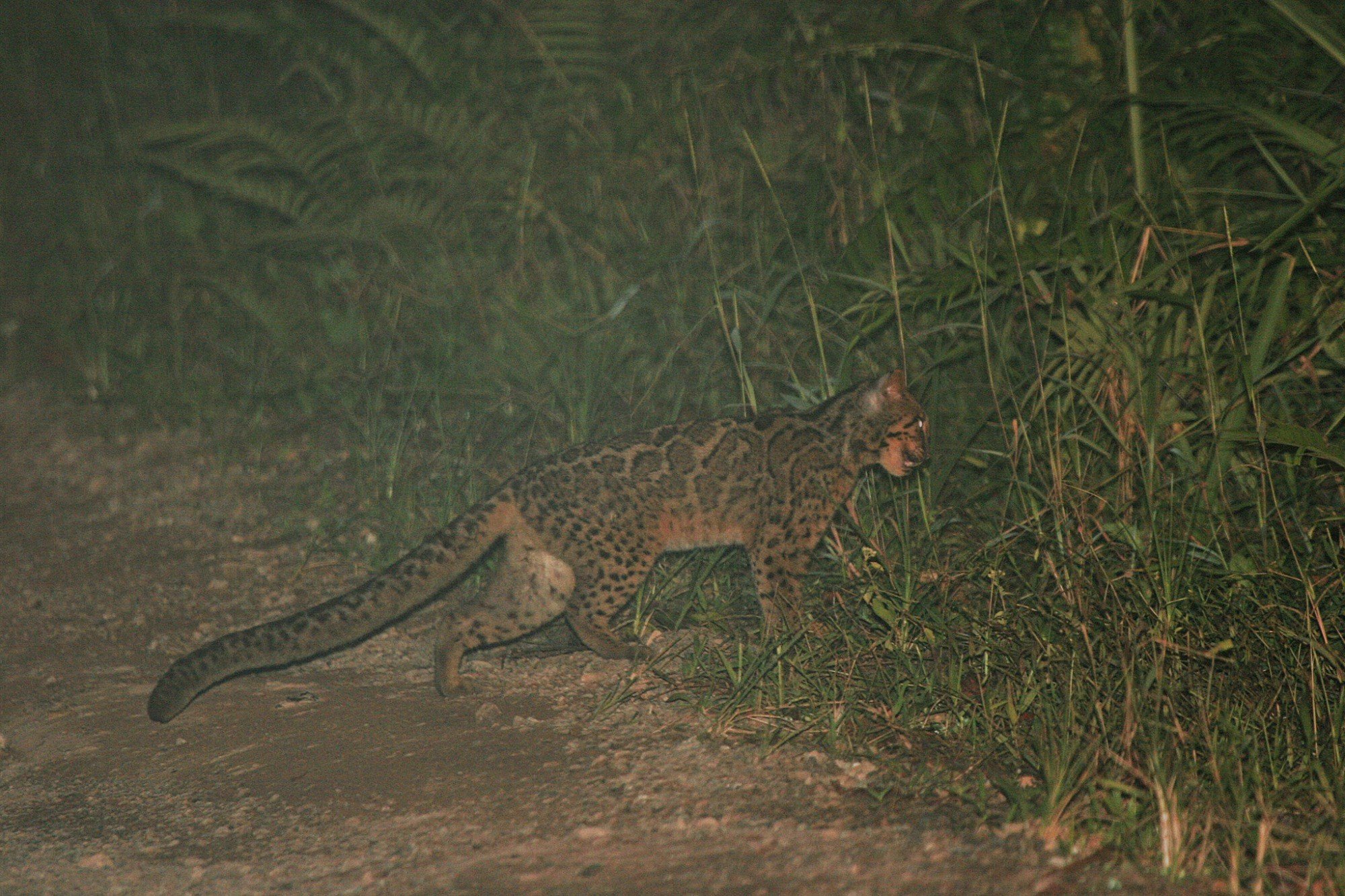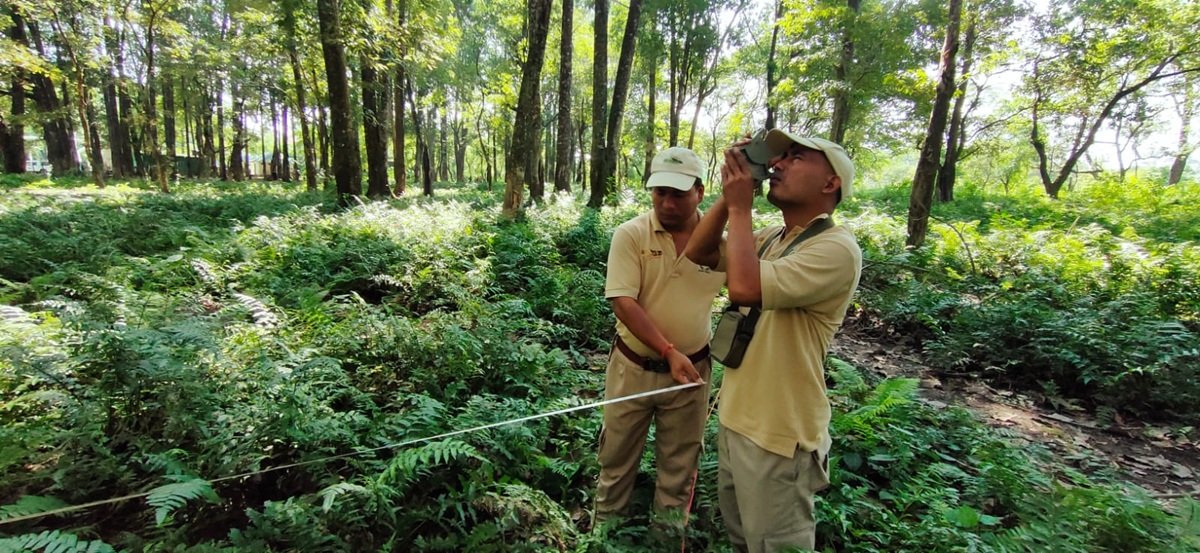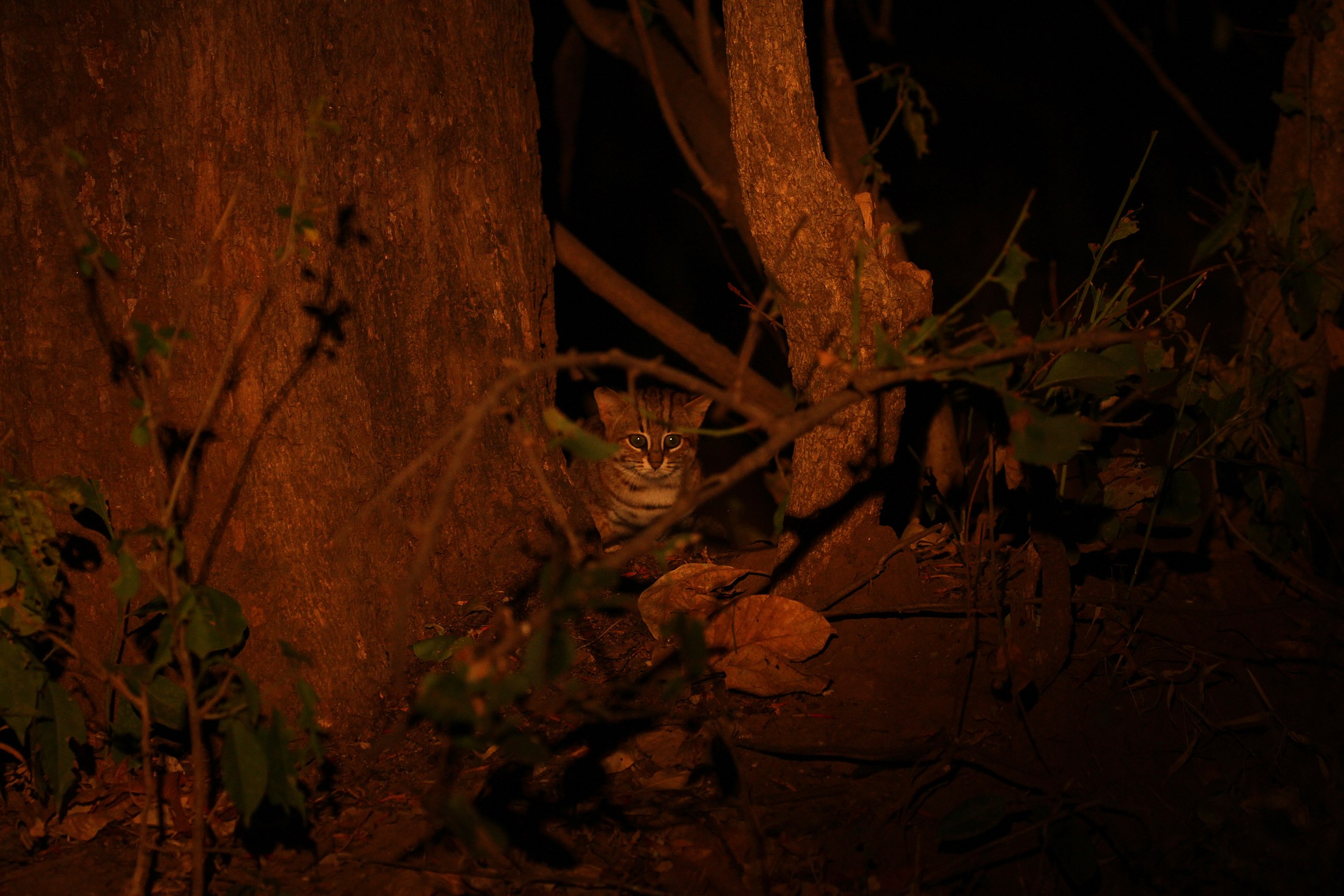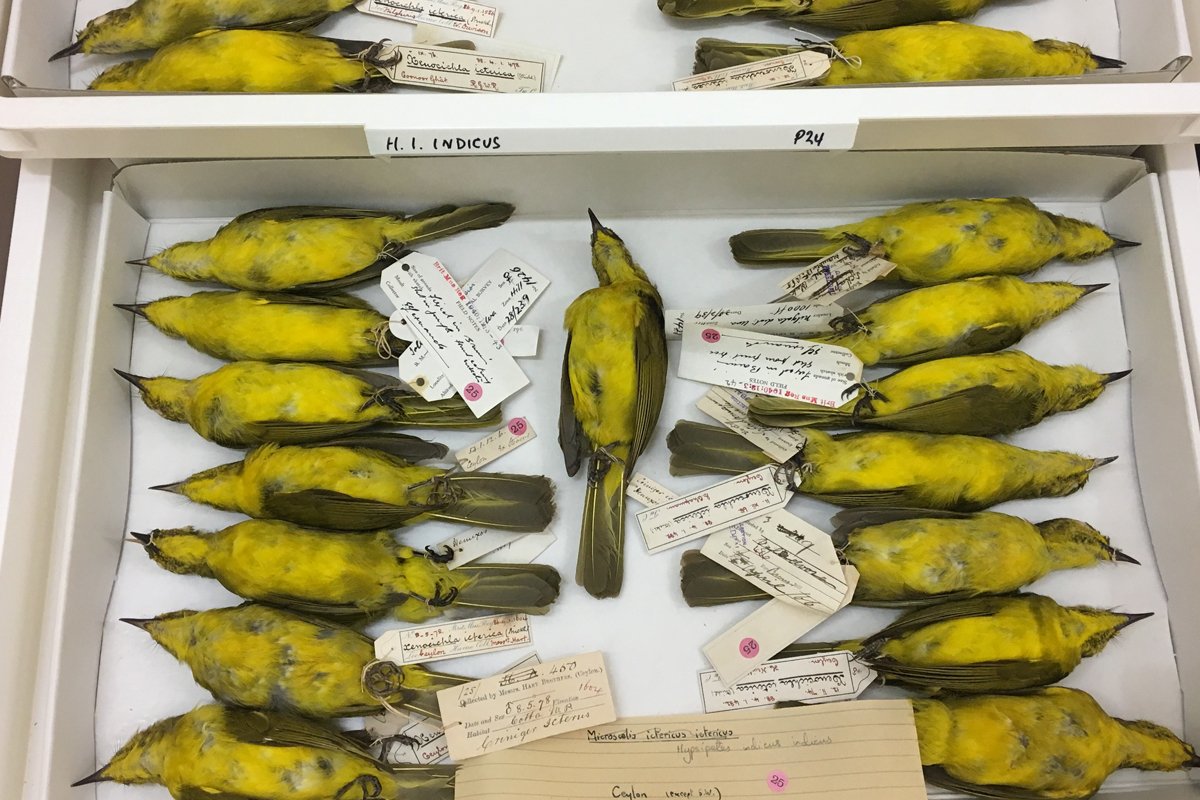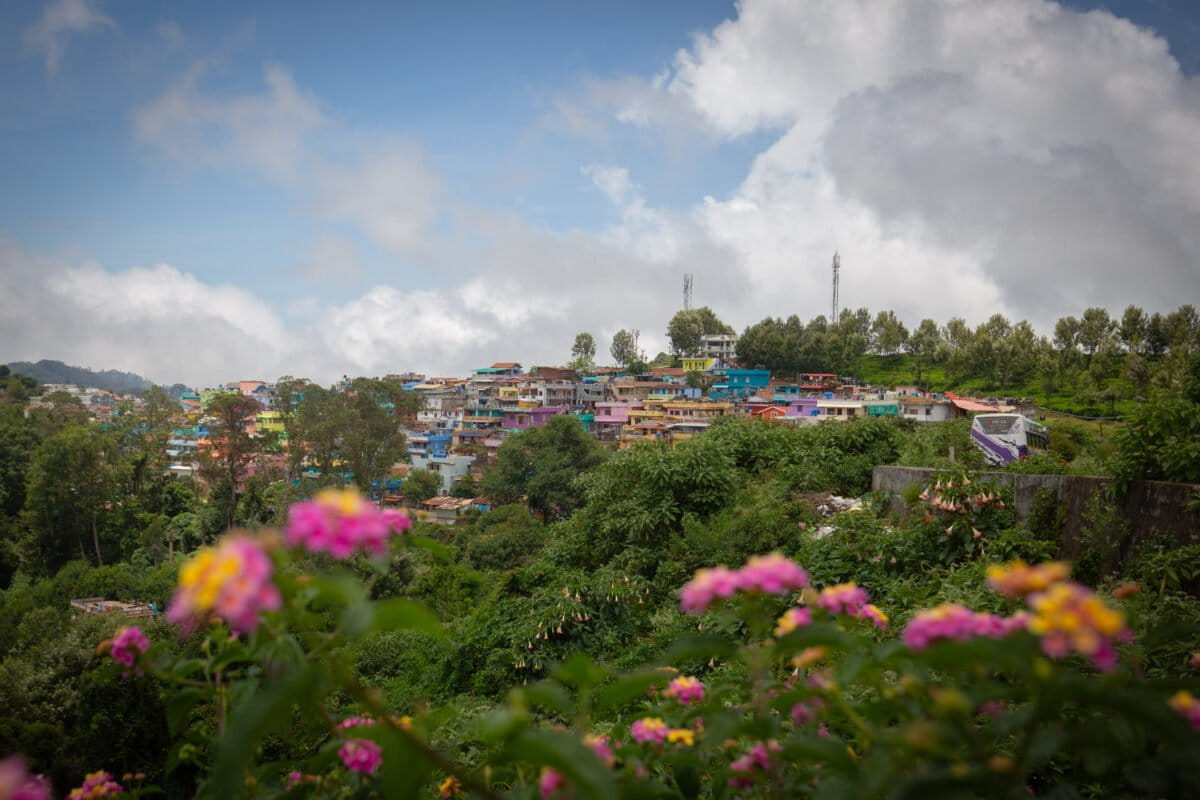
- A snow leopard population and distribution assessment has found almost 500 of the elusive big cats in trans-Himalayan Ladakh, making up 68% of India’s snow leopard population.
- The findings show that snow leopards are thriving, often outside protected areas, in valleys shared with residents, livestock, and tourists.
- While so far, human-snow leopard coexistence has worked, rising human pressures such as tourism, infrastructure development, and feral dogs threaten this delicate balance.
- The study provides India’s first national photo-library of snow leopards with unique pelage pattern of every individual. Other range countries and Indian states can contribute to this library.
High up in the remote, rugged mountains of the Himalayas, a phantom predator prowls — rarely seen, silently surviving. The snow leopard, one of the world’s most elusive big cats, is famously hard to track. Until now, most knowledge about these “ghosts of the mountains” has come from fragmented surveys, anecdotal sightings, and sparse camera trap footage. Estimating their population has remained a major challenge. But a recent study is changing that.
Spanning two years and 59,000 sq. km. across trans-Himalayan Ladakh, the assessment estimated that around 477 snow leopards, making up about 68% of India’s total snow leopard population, live in the region. The assessment is said to be the most extensive and in-depth snow leopard survey ever conducted in India.
“We built on lessons learned from 25 years of large-scale tiger population assessments to make this study robust and replicable. It wasn’t limited to known hotspots or prime habitats. This makes it the largest, most systematic, and most intensive effort ever undertaken across the snow leopard range,” says Pankaj Raina from the department of wildlife protection, Leh, union territory of Ladakh, and one of the study’s co-authors.
Ground work
Ladakh is home to the country’s largest contiguous snow leopard habitat. To understand where these elusive big cats live and estimate their numbers, researchers used a “double-sampling” method. First, they walked over 6,000 km across the region, documenting signs like scat, paw prints, and scrape marks. Then, in the second phase, they set up 956 camera traps across high, medium, and low-density areas, capturing over 26,000 images of snow leopards.

“Difficult terrain and poor transport infrastructure made the survey a logistical challenge. We relied on ponies to carry rations and equipment, set up temporary camps in sub-zero conditions, and had to wait for winter to access some remote areas, when frozen streams allowed passage. Cameras were placed one winter and collected the next, ensuring strong coverage,” says Raina.
An artificial intelligence (AI) tool called CaTRAT, designed to recognise Himalayan wildlife, was used to identify the species in the images. Biologists then verified these identifications. From this data, snow leopard photos were selected and analysed using a software called Extract-Compare, which focused on the unique forehead patterns of each animal — like a fingerprint — to tell individual snow leopards apart. It turned out to be more reliable than the commonly used side-pattern method. “The snow leopard’s long fur can ruffle in the wind and distort side patterns, but the forehead has shorter, more consistent fur, which makes identification clearer,” says Yadvendradev Jhala, an Indian National Science Academy (INSA) senior scientist, also associated with the National Centre for Biological Sciences and Wildlife Institute of India, and a co-author of the study.
Looking at forehead patterns not only reduced the number of cameras needed but also delivered cleaner, more consistent data.
The outcome: India’s first national photo library of snow leopards, wherein the unique pelage pattern of every individual is digitised using a machine learning program. Other range countries and Indian states can contribute to this library. As this database grows, it will support long-term tracking of individuals, help detect poaching, and reveal behavioural trends across years and regions.
The researchers also used satellite images and climate data to study the landscape and understand what kind of terrain snow leopards prefer, and utilised a method called spatial capture-recapture (which estimates populations based on repeated sightings of known individuals across space) to estimate how many leopards were in the region.

The numbers speak
Researchers recorded 9,525 signs of snow leopards across the landscape. From 97,000 camera-trap nights, they identified 126 individual snow leopards. Based on the data, the study estimates that around 477 snow leopards inhabit 47,572 square kilometres of trans-Himalayan Ladakh, making up about 68% of India’s total snow leopard population.
Densities varied widely, from as low as 0.003 to as high as 3.18 individuals per 100 sq km. Hemis National Park and Nubra Shyok Wildlife Sanctuary showed notably high concentrations. “The average density across the entire Ladakh landscape is about one snow leopard per 100 sq km. But at Hemis National Park, it goes up to as much as three per 100 square kilometres. That’s very high,” says Jhala.
The researchers found that snow leopards preferred lower-elevation grasslands with abundant prey, both wild and domestic. More than half of the sightings (61%) occurred outside protected areas, in landscapes shared with people, livestock, and seasonal tourists. “We also GPS-collared 10 individuals. Data (yet to be published) show home ranges from 100 to 500 sq km, depending on habitat and prey availability. This confirms they are wide-ranging animals, often moving far beyond protected areas,” says Raina.
Coexistence in a changing land
The survey findings highlight the importance of shared landscapes and coexistence. Local communities in Ladakh have lived alongside wildlife for generations, guided by cultural values and sustainable pastoral practices. “Snow leopards are not poached here. The combination of the Buddhist culture and economic incentives to preserve the species has allowed their population to increase in density,” says Jhala.
Yet coexistence is not without its challenges. Snow leopards feed on both wild prey, such as blue sheep, ibex, and Ladakh urial, and on domestic livestock. In winter, when food is scarce, they follow herds into lower valleys shared by people and animals alike. These multi-use valleys, especially along the Indus river, are crucial to winter grazing. This overlap can lead to conflict, especially when snow leopards hunt livestock. To mitigate this potential for conflict, the researchers stress the need for compensation schemes and policies that support both wildlife and local communities.
Moreover, Ladakh’s unique land-use pattern has helped the snow leopard thrive. “Human activities, including agriculture, are performed only on 0.5% of the total geographical area, leaving the rest beyond human influence. It makes almost all landscapes in Ladakh viable for conservation,” says Raina.

What comes next
Snow leopards are more than charismatic icons. They are apex predators, crucial to maintaining the ecological balance of fragile mountain ecosystems. Yet their survival is increasingly under pressure. The study flags several looming threats: growing tourism, road and dam construction, habitat loss, and climate-driven changes in vegetation.
Among the most urgent concerns is the rise of free-ranging dogs, a direct consequence of garbage accumulating near army camps and expanding towns. “There’s a natural community of carnivores here, such as wolves, lynx, brown bears, foxes, but feral dogs are a man-made crisis. They pose a serious threat to both snow leopards and wolves, and the situation will only worsen if left unchecked,” says Jhala.
Additionally, conserving only protected areas is not enough. Development must be based on cumulative impact assessments and shared mitigation strategies. “Ladakh has its own ecological and cultural context. Copy-pasting development models from elsewhere will not work,” says Raina.
To address this gap, the study calls for long-term monitoring, expansion into under-studied regions, and stronger protections for shared-use landscapes. “Our findings show Ladakh’s snow leopard population is contiguous; it connects with populations in China, Tibet, Nepal, Pakistan and the Karakoram (mountain range). So, any new infrastructure must be planned with care, to ensure it doesn’t fragment this vital corridor. This is also a good dataset to showcase why green infrastructure — animal passages, corridors — needs to be the norm,” says Jhala.
What also makes this survey significant is its alignment with global conservation frameworks such as PAWS (Population Assessment of the World’s Snow Leopards). By applying standardised methods across a vast and varied landscape, the researchers have created a replicable model that could be scaled across the Indian Himalayas. This unified approach will only improve snow leopard conservation in the future. “Moreover, its comprehensive, replicable methodology will also be able to help monitor other carnivores, such as wolves, lynx and brown bear, using the same camera trap data,” says Jhala.
Read more: Solar power looms large over the snow leopards of Spiti
Banner image: A camera trap image of a snow leopard marking a rock with its scent. Image by Pankaj Raina et al.







